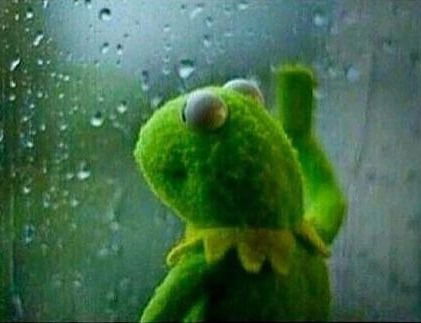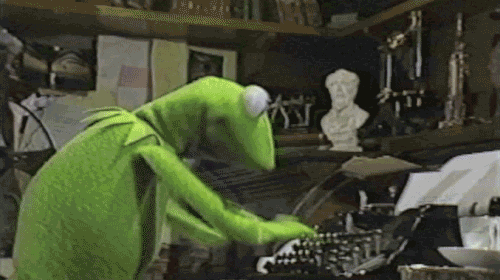Let’s Get Deep

Deep POV is a tool to be used. How much or how little depends on the individual story. It can be used on its own for an entire novel—I’ll just say here that I don’t know if one actually exists, but it’s not impossible, just extremely difficult—or woven (heavily or sparingly) into already chosen narrative constructs (i.e., First person, Third person, Omniscient, etc.).
It’s applied in times when you want readers to experience the story as if they are the character. It sucks them into the intense moments in the story and allows them to experience the emotions of the character as the scene is happening. How deep POV and other narrative constructs are blended determines how the story is experienced. Each story has its own special blend.
Lisa Hall Wilson gives an excellent example of how deep POV is blended with other narrative styles in one of her articles on writerinthestorm blog:
Shifting Between Psychic Distance Styles
The blue text is limited/close third person, bolded is deep pov, and orange is objective or indirect point of view. This first one is written in first person, but it’s not all in deep point of view (a lot of people don’t understand that first person is not automatically deep pov).

Check out more examples like this in her article here and find other articles from this Deep POV expert under her short bio at the end of it. You won’t regret it.
Why should deep POV be used and what's the best way to write it?
Deep POV emphasizes character and their relationship to the story’s plot, where narrative voice favors looking at characters in their environment. When writing in deep POV an author must stick close to a scene’s story arc while knitting descriptions and character edifications throughout it.

It also discourages narrative tangents—one reason writing in deep POV can feel very restrictive, but I believe it's mostly because there are...
A LOT of DON’Ts
A big reason for deep POV being hard to master is that there are more DON’Ts than DOs. Here are the standard ones you can find when searching for info:
- Don’t use filter words
- Don’t name emotions
- Don’t use narrative tricks/ Don’t break character
- Don’t do flashbacks
- Don’t have characters explain their thoughts, beliefs, and world view
- Don’t tell
Frustrating, yes?

It’s tempting to wonder if it really matters if the rules get broken “just this once”? Shortcuts may also seem a decent solution, but . . .
DON'T TAKE SHORTCUTS
The desire to attain deep POV can often lead to sloppy writing. To steer clear of that, here are three more don’ts for the list:
1. Don’t Ignore Paragraph Flow
Paragraph flow is something rarely talked about, but it’s one of the most important aspects of writing. Good flow connects individual elements to create a unified whole that produces meaning.
Smooth connections also allow a reader to easily stay transfixed. Prose written in deep POV, however, often becomes choppy. This may occur from trying to transform traditional narrative styles into deep POV.
When applying deep POV, (if it’s to be well written) be aware that it may require a different ordering of information in paragraphs.
Also, many authors go over a first draft replacing as many “tells” as possible but would do well to consider that “showing” is not ALWAYS the best option. Sprinkled in the right places, telling helps keep a more appropriate pace when applied to aspects of the story that aren’t imperative to show.

2. Don’t Carelessly Delete Filter Words
It is often implied that filter words exist to create distance between a reader and the character. It’s not true. Filter words are mostly used to create transitions in a paragraph, a shift from the panoramic to the personal.
Unabashedly deleting them often leads to choppy prose, but many deep POV authorities often advise writers to search the manuscript for filter words and simply delete them.
For example, transforming “She saw a shadowy figure closing the door” to “A shadowy figure closed [or was closing] the door” is easy enough, but make certain that the revision flows with the rest of the paragraph. That “She saw” might be an appropriate transition.

3. Don’t Infodump in Dialogue
An unfledged author will reveal themselves if they attempt deep POV by moving everything—from setting description to a character’s thoughts and feelings—into dialogue.
A commonly misleading logic is that dialogue is always a part of a scene and therefore always showing. And while this may be technically true, infodumping in dialogue is still a form of telling. It’s dull and tiresome to read.
Conclusion of the DON'Ts:
- Deep POV requires a different approach to storytelling
- There are no shortcuts when writing in deep POV
Movin' right along. . .

Because I abhor DON’Ts, I’ve included a list of DOs to provide a bit more guidance.
Here are some tips on how to go about leveling up those skills when creating thoughtscapes:
1. Shed the "Narrator" Costume:
Deep POV is about hanging up the narrator hat and slipping into a character's shoes.
Replace "he said, she thought,” with "I said, I thought." Commit to that first-person experience to be able to write it.
Metaphors and similes are go-to tools, once again, to create a word masterpiece that absorbs reader attention.
2. Mind-Melding:
Channel a character's thoughts, feelings, and desires. Get inside a character’s head like a telepath.
3. Avoid Filter Words:
Cut filter words that stand between a reader and the raw emotions.
Instead of "he felt the wind on his face," make it "the wind swept across my face." There you go, instant intimacy.
Just keep in mind maintaining those smooth transitions.
4. Eavesdrop Like a Pro:
Ever eavesdropped on someone's conversation? Deep POV is like that, minus the guilt. Listen in on a character's inner dialogue and spill the beans to readers.
Inject the character's voice into every spoken word. If they've got a tendency to use excessive exclamation points, embrace it. And if they're more the "I'll just mumble a response" type, give readers those appropriately awkward silences.
5. Give precedence to the details:
Imagine describing your favorite food to someone who's never tasted it. Zoom in on senses—sight, sound, smell, taste, touch. Let readers savor every moment.
6. Stay in Character:
Remember to keep a character's attributes, lingo, and attitude consistent.
Let go of the formalities. Use a character’s lingo, their unique expressions. If they’ve got a thing for using ‘dude’ every other sentence, embrace it; use it every other sentence.
7. Limit Monologue Drama:
Deep POV is immersive but ration the number of internal monologues. Give readers a bit of a break from constant internal chatter. Find the right balance between action, dialogue, and introspection.
8. Show, Don't Tell:
While delving deep into a character's psyche, remember to let actions and reactions reveal their emotions.
9. No Assembly Required:
Avoid clunky "in her/his/their opinion" navigation. Go ninja-style here. Readers are smart enough to follow without being handheld through every thought.
10. Practice Makes Perfect:
From practice arises a Deep POV master. Write, rewrite, and repeat until character immersion becomes a habit.

Important tip: make sure a character's internal journey aligns with their external one. If they're staring down a dragon, their inner thoughts most likely won’t turn to pondering the meaning of life (unless that's their coping mechanism, then go ahead and let them philosophize).
And with fantasy fiction, keep in mind a bit of reality bending is okay. Sci-fantasy, dystopian, and speculative worlds are your playgrounds; let your imagination thrive.
Remember, Deep POV is the key to reader engagement. Make characters as real and as unforgettable as you are.
Brave the Deep, you magnificent authors!
